The Phylicia Barnes Murder Trial Day 4 Recap: Witness Testifies Defendant Showed Him Dead Teen’s Body After He Raped And Murdered Her
Posted by David Adams on January 31st, 2013
Day four of the Phylicia Barnes Murder Trial began on a more peaceful note, as Baltimore Sun crime report Justin Fenton tweeted that Russell Barnes (biological father) and Raheem Mustafa (Phylicia’s real dad) set side by side in court. The site was nothing short of the appearance of an olive branch having been offered between the pair after Circuit Court judge Alfred Nance had scolded them a day earlier. Before day three of the trial began Nance could be overheard from the bench saying. “this is about Phylicia, this is about Phylicia. If I hear it again I’ll throw both of you in jail”, after he summoned the men to the bench. The men both stormed out of the court room after the judge’s stern warning. There had been no indication made public as to what the concern was between the slain teen’ fathers, but TPC has learned that Russell Barnes allegedly threatened the child’s stepdad in the hallway of the court house resulting in a heated exchange between them. Today’s scene in cort depicting both men seated together offered hope that the riff between the pretty little girl’s families may finally beginning to subside in a joint effort to collectively seek justice for their precious little girl. The state’s first witness Wednesday was assistant state medical examiner Pamela E. Southall, who detailed how she reached the conclusion that Phylicia Barnes was asphyxiated and that the manner of death was homicide. Southall said an examination of the body didn’t reveal any sort of trauma, and that asphyxiation was essentially the default finding. Asphyxiation encompasses a few types of death – including suffocation, strangulation, drowning, and compression. Southall said she couldn’t be sure which of those Phylicia died from. To make the finding of homicide, Southall said she relied heavily on police investigators and their theories of the case. “The suspicious nature could not be overlooked,”and “You can’t ignore that she’s 16 years old, visiting from out of state who simply ups and disappears.” Defense attorney Russell Neverdon countered byasking Southall why she ruled it a homicide when the lack of evidence opened up other possibilities, such as Phylicia drowning due to her own actions. “Is it possible to suppose she was alive at the time her body came into contact with the water?” Neverdon asked. Southall said “I can’t rule that out.” She noted that 13 people in the state medical examiner’s office, including chief medical examiner David Fowler, agreed on her findings. The examiner’s testimony gives insight on the fact determinations on how some murder victims were actually killed isn’t solely centered around science. Some common sense has to come into play, and that’s apparently what they utilized to come to their conclusions in the Barnes teen autopsy. Assistant State’s Attorney Tonya LaPolla also put forward a theory that Phylicia was put into the water inside a plastic container, allowing the body to be preserved for a time. Phylicia’s body was only moderately decomposed despite her having been dead for three to four months, in the estimation of a forensic anthropologist who testified later. Southall testified that that was possible, saying that she would have expected more damage to the body had it been loose in the water for so long. That information is critical to the state’s case because it has always been their position that Michael Johnson transported the teen’s body out of the apartment in a plastic container. The lack of video footage from surveillance cameras around the apartment complex and in the immediate area, showing Barnes leaving, helped police theorize how she vanished without detection. The state later called one of their key witnesses to the stand. A 36-year-old man name James McCray began his testimony by saying his name was actually Jason Lee and that he had drifted to Baltimore six years ago from New York, and rann an under-the-table business helping unqualified drivers get tags and titles. McCray told jurors the defendant, Michael Maurice Johnson, called him for help disposing of a dead body. “You won’t believe what happened,” he said Johnson told him as they stood over Phylicia’s body wrapped in a bedsheet. Defense attorney Russell Neverdon denounced McCray as a “jailhouse snitch and someone who “couldn’t tell Michael Johnson from Michael Jordan. Neverdon spent little time cross-examining McCray, shouting “no more questions” after McCray incorrectly testified that the killing took place before Christmas. Although McCray made an error in establishing the actually date his alleged encounter with Johnson showing him her dead body, his version is compelling. McCray told the court that he had nothing to gain from testifying. He didn’t come forward with information about Phylicia’s death until June 2012, when he said he was overcome by guilt while reading the Bible in jail. Johnson had been indicted and charged in Phylicia’s death two months earlier, though McCray said he was not aware of that. “I was feeling kinda bad about having information with respect to the young child’s murder, and not doing what I can to help out,” According to McCray, he had connected with Johnson a few times through his underground business but stressed that he did not know him. He also said he had met Phylicia, who visited Baltimore only a handful of times, and said she stuck in his head because she had remembered him, calling him by the nickname of “New York.” He said Johnson called him one day, explaining he had a “serious matter” and giving McCray directions to his apartment. Johnson took him into a bedroom, where McCray said it looked as if there had been a struggle. He said Johnson explained that “the girl had been giving him mixed signals about what direction they were going” and that Johnson forced himself on her. McCray told the court, “After that, she wouldn’t stop crying. He couldn’t get her to stop crying, so he killed her. He said he choked her.” McCray’s account coincides with the state medical examiner’s conclusion that Phylicia Barnes had been asphyxiated, and also supports police investigators theory that Barnes was killed at her half-siblings northwest Baltimore apartment. McCray said he declined Johnson’s request to help him move the body but offered him advice based on a similar experience with someone else he knew. He said he told Johnson to turn off his phone so that his GPS data wouldn’t track his movements, and said that Johnson shouldn’t bury the body but toss it into water so that evidence showing he had sex with the teen would be destroyed. McCray’s comments on that line of questioning maybe the pivotal moment in the case, because prosecutors had questioned the defendants older brother Glen Johnson previously during the trial, asking him if he remembered looking for GPS data information about cellphones on the computer the day after Barnes disappeared. The testimony is powerful with the state’s ability to prove that Johnson family members may have been attempting to cover their tracks long before investigators even began looking at the Barnes case as a homicide. Additionally, McCray’s account alleging he told Johnson to turn off his phone may close the gape the state faces, in which they are unable to show how Johnson got the teen’s body to the Susquehanna River. Johnson may have more than likely turned off his cellphone or left it at home while transporting the body. McCray’s advice may also have determined how Johnson decided to dispose of the teen’s body. State medical examiners say they agree with the state’s notion that Barnes was discarded in water inside some kind of container. To reiterate previous testimony from officials at the medical examiners office, testimony was given that they were surprised about the lack of decomposition the teen’s body displayed, and that they would have expected more decay if the body had been completely floating in water for a four month period. On cross-examination, Neverdon asked McCray if he had any mental conditions or had been held in a psychiatric facility, and he said no. It’s not clear whether the defense was attempting to establish McCray had a psychiatric history or simply questioning his competence, but his testimony was convincing, and supports medical examiners findings as well as the police investigators theories regarding what happened to Phylicia Barnes. I am personally convinced that McCray is telling the truth, because during an interview with Phylicia’s mother over a year ago, she told me she believed Michael Johnson pounced on her daughter while she was alone, may have raped her, and her daughter probably told Johnson “I’m going to tell my mommie, and she is going to kill you”, causing Johnson to panic, killing the pretty child to stop her from revealing that he had raped her. Ironicly, McCray’s account is exactly what the child’s mom believes actually happened. Defense attorney Neverdon questioned the logic behind the state’s official conclusion on how Barnes actually died, saying that it was only a theory and that the evidence suggested a range of possibilities, including that Phylicia could have drowned because of her own actions. But medical examiner Southall also said that the “moderate” decomposition of the body bolstered prosecutors’ theory that it was dumped into the water while inside a plastic tub, possibly helping to preserve the body for a time. “If not contained, you would expect more injury,” she said. Moreover, while the state and defense argue and debate whether Barnes was actually place in the Susquehanna River inside some kind of plastic tub, it has already been proven that Johnson purchased a large plastic tub at a local Wal-Mart on the exact day Barnes disappeared. The defense knew that this was part of the 17,000 page discover evidence the state had filed in the case, and they have been attempting to create doubt about eyewitness accounts that depict Michael Johnson struggling carrying a large plastic tub in the hallway around the time he says he last saw Phylicia, citing the two witnesses description of the tubs size differ. In reality, the store surveillance tape shows Johnson purchasing a plastic tub, but it’s the wrong size, and smaller than the one he may have used to transport the child’s body. This maybe why the witnesses accounts differ on the size of the tub. This theory also supports James McCray’s account as well, because Johnson probably purchased the container to replace the one he had taken from Deena’s apartment, making certain he didn’t leave any DNA evidence behind, as McCray testified he had warned Johnson about, and may demonstrate why the plastic tub has never been found. Day five of the Phylica Barnes Murder Trial continues tomorrow. Still waiting on Justice for Simone.
Sources:
Baltimore Sun (Justin Fenton)
The People’s Champion
I’m David Adams
A Self proclaimed geek, Sympathizer for the homeless, Social Change Advocate, Crime Blogger, Promoter of Awareness for Missing and Exploited Children, and a mobile technology enthusiast. A recognized Journalist and Human Interest Writer championing the plight of the masses whom are without a voice of their own.
More Posts - Website
Follow Me:





Day four of the Phylicia Barnes Murder Trial began on a more peaceful note, as Baltimore Sun crime report Justin Fenton tweeted that Russell Barnes (biological father) and Raheem Mustafa (Phylicia’s real dad) set side by side in court. The site was nothing short of the appearance of an olive branch having been offered between the pair after Circuit Court judge Alfred Nance had scolded them a day earlier. Before day three of the trial began Nance could be overheard from the bench saying. “this is about Phylicia, this is about Phylicia. If I hear it again I’ll throw both of you in jail”, after he summoned the men to the bench. The men both stormed out of the court room after the judge’s stern warning. There had been no indication made public as to what the concern was between the slain teen’ fathers, but TPC has learned that Russell Barnes allegedly threatened the child’s stepdad in the hallway of the court house resulting in a heated exchange between them. Today’s scene in cort depicting both men seated together offered hope that the riff between the pretty little girl’s families may finally beginning to subside in a joint effort to collectively seek justice for their precious little girl. The state’s first witness Wednesday was assistant state medical examiner Pamela E. Southall, who detailed how she reached the conclusion that Phylicia Barnes was asphyxiated and that the manner of death was homicide. Southall said an examination of the body didn’t reveal any sort of trauma, and that asphyxiation was essentially the default finding. Asphyxiation encompasses a few types of death – including suffocation, strangulation, drowning, and compression. Southall said she couldn’t be sure which of those Phylicia died from. To make the finding of homicide, Southall said she relied heavily on police investigators and their theories of the case. “The suspicious nature could not be overlooked,”and “You can’t ignore that she’s 16 years old, visiting from out of state who simply ups and disappears.” Defense attorney Russell Neverdon countered byasking Southall why she ruled it a homicide when the lack of evidence opened up other possibilities, such as Phylicia drowning due to her own actions. “Is it possible to suppose she was alive at the time her body came into contact with the water?” Neverdon asked. Southall said “I can’t rule that out.” She noted that 13 people in the state medical examiner’s office, including chief medical examiner David Fowler, agreed on her findings. The examiner’s testimony gives insight on the fact determinations on how some murder victims were actually killed isn’t solely centered around science. Some common sense has to come into play, and that’s apparently what they utilized to come to their conclusions in the Barnes teen autopsy. Assistant State’s Attorney Tonya LaPolla also put forward a theory that Phylicia was put into the water inside a plastic container, allowing the body to be preserved for a time. Phylicia’s body was only moderately decomposed despite her having been dead for three to four months, in the estimation of a forensic anthropologist who testified later. Southall testified that that was possible, saying that she would have expected more damage to the body had it been loose in the water for so long. That information is critical to the state’s case because it has always been their position that Michael Johnson transported the teen’s body out of the apartment in a plastic container. The lack of video footage from surveillance cameras around the apartment complex and in the immediate area, showing Barnes leaving, helped police theorize how she vanished without detection. The state later called one of their key witnesses to the stand. A 36-year-old man name James McCray began his testimony by saying his name was actually Jason Lee and that he had drifted to Baltimore six years ago from New York, and rann an under-the-table business helping unqualified drivers get tags and titles. McCray told jurors the defendant, Michael Maurice Johnson, called him for help disposing of a dead body. “You won’t believe what happened,” he said Johnson told him as they stood over Phylicia’s body wrapped in a bedsheet. Defense attorney Russell Neverdon denounced McCray as a “jailhouse snitch and someone who “couldn’t tell Michael Johnson from Michael Jordan. Neverdon spent little time cross-examining McCray, shouting “no more questions” after McCray incorrectly testified that the killing took place before Christmas. Although McCray made an error in establishing the actually date his alleged encounter with Johnson showing him her dead body, his version is compelling. McCray told the court that he had nothing to gain from testifying. He didn’t come forward with information about Phylicia’s death until June 2012, when he said he was overcome by guilt while reading the Bible in jail. Johnson had been indicted and charged in Phylicia’s death two months earlier, though McCray said he was not aware of that. “I was feeling kinda bad about having information with respect to the young child’s murder, and not doing what I can to help out,” According to McCray, he had connected with Johnson a few times through his underground business but stressed that he did not know him. He also said he had met Phylicia, who visited Baltimore only a handful of times, and said she stuck in his head because she had remembered him, calling him by the nickname of “New York.” He said Johnson called him one day, explaining he had a “serious matter” and giving McCray directions to his apartment. Johnson took him into a bedroom, where McCray said it looked as if there had been a struggle. He said Johnson explained that “the girl had been giving him mixed signals about what direction they were going” and that Johnson forced himself on her. McCray told the court, “After that, she wouldn’t stop crying. He couldn’t get her to stop crying, so he killed her. He said he choked her.” McCray’s account coincides with the state medical examiner’s conclusion that Phylicia Barnes had been asphyxiated, and also supports police investigators theory that Barnes was killed at her half-siblings northwest Baltimore apartment. McCray said he declined Johnson’s request to help him move the body but offered him advice based on a similar experience with someone else he knew. He said he told Johnson to turn off his phone so that his GPS data wouldn’t track his movements, and said that Johnson shouldn’t bury the body but toss it into water so that evidence showing he had sex with the teen would be destroyed. McCray’s comments on that line of questioning maybe the pivotal moment in the case, because prosecutors had questioned the defendants older brother Glen Johnson previously during the trial, asking him if he remembered looking for GPS data information about cellphones on the computer the day after Barnes disappeared. The testimony is powerful with the state’s ability to prove that Johnson family members may have been attempting to cover their tracks long before investigators even began looking at the Barnes case as a homicide. Additionally, McCray’s account alleging he told Johnson to turn off his phone may close the gape the state faces, in which they are unable to show how Johnson got the teen’s body to the Susquehanna River. Johnson may have more than likely turned off his cellphone or left it at home while transporting the body. McCray’s advice may also have determined how Johnson decided to dispose of the teen’s body. State medical examiners say they agree with the state’s notion that Barnes was discarded in water inside some kind of container. To reiterate previous testimony from officials at the medical examiners office, testimony was given that they were surprised about the lack of decomposition the teen’s body displayed, and that they would have expected more decay if the body had been completely floating in water for a four month period. On cross-examination, Neverdon asked McCray if he had any mental conditions or had been held in a psychiatric facility, and he said no. It’s not clear whether the defense was attempting to establish McCray had a psychiatric history or simply questioning his competence, but his testimony was convincing, and supports medical examiners findings as well as the police investigators theories regarding what happened to Phylicia Barnes. I am personally convinced that McCray is telling the truth, because during an interview with Phylicia’s mother over a year ago, she told me she believed Michael Johnson pounced on her daughter while she was alone, may have raped her, and her daughter probably told Johnson “I’m going to tell my mommie, and she is going to kill you”, causing Johnson to panic, killing the pretty child to stop her from revealing that he had raped her. Ironicly, McCray’s account is exactly what the child’s mom believes actually happened. Defense attorney Neverdon questioned the logic behind the state’s official conclusion on how Barnes actually died, saying that it was only a theory and that the evidence suggested a range of possibilities, including that Phylicia could have drowned because of her own actions. But medical examiner Southall also said that the “moderate” decomposition of the body bolstered prosecutors’ theory that it was dumped into the water while inside a plastic tub, possibly helping to preserve the body for a time. “If not contained, you would expect more injury,” she said. Moreover, while the state and defense argue and debate whether Barnes was actually place in the Susquehanna River inside some kind of plastic tub, it has already been proven that Johnson purchased a large plastic tub at a local Wal-Mart on the exact day Barnes disappeared. The defense knew that this was part of the 17,000 page discover evidence the state had filed in the case, and they have been attempting to create doubt about eyewitness accounts that depict Michael Johnson struggling carrying a large plastic tub in the hallway around the time he says he last saw Phylicia, citing the two witnesses description of the tubs size differ. In reality, the store surveillance tape shows Johnson purchasing a plastic tub, but it’s the wrong size, and smaller than the one he may have used to transport the child’s body. This maybe why the witnesses accounts differ on the size of the tub. This theory also supports James McCray’s account as well, because Johnson probably purchased the container to replace the one he had taken from Deena’s apartment, making certain he didn’t leave any DNA evidence behind, as McCray testified he had warned Johnson about, and may demonstrate why the plastic tub has never been found. Day five of the Phylica Barnes Murder Trial continues tomorrow. Still waiting on Justice for Simone.
Sources:
Baltimore Sun (Justin Fenton)
The People’s Champion
I’m David Adams
A Self proclaimed geek, Sympathizer for the homeless, Social Change Advocate, Crime Blogger, Promoter of Awareness for Missing and Exploited Children, and a mobile technology enthusiast. A recognized Journalist and Human Interest Writer championing the plight of the masses whom are without a voice of their own.
More Posts - Website
Follow Me:




You can
leave a response, or
trackback from your own site.

 RSS Feed
RSS Feed Twitter
Twitter




 Posted in
Posted in 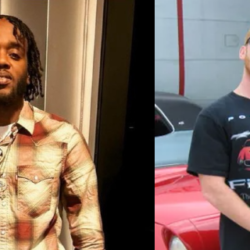

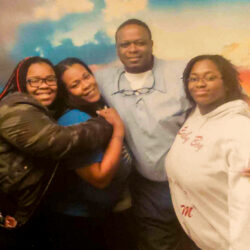
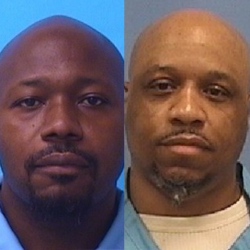
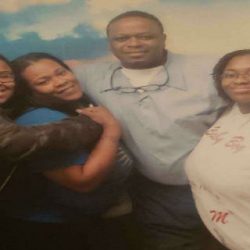



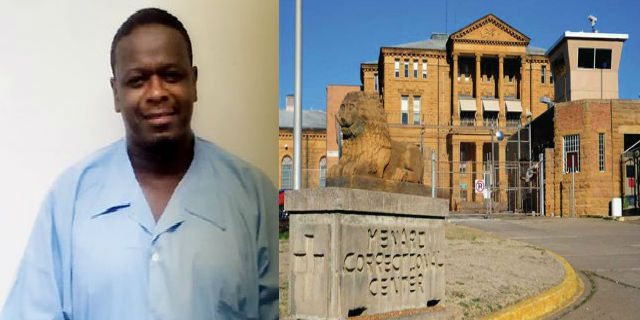
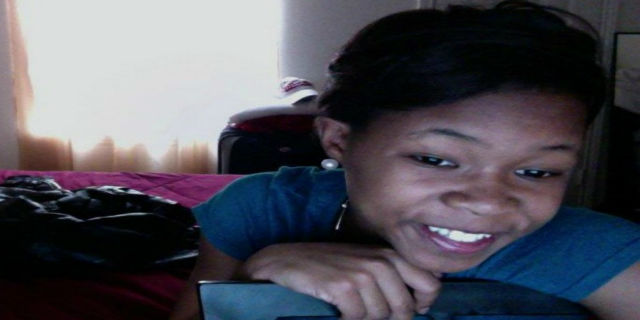



Isreal Neece
I found a great…